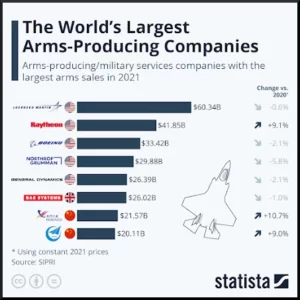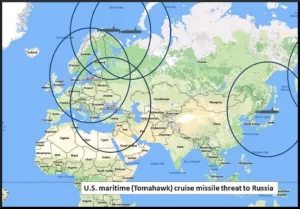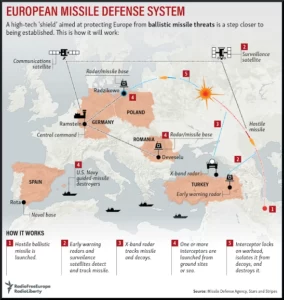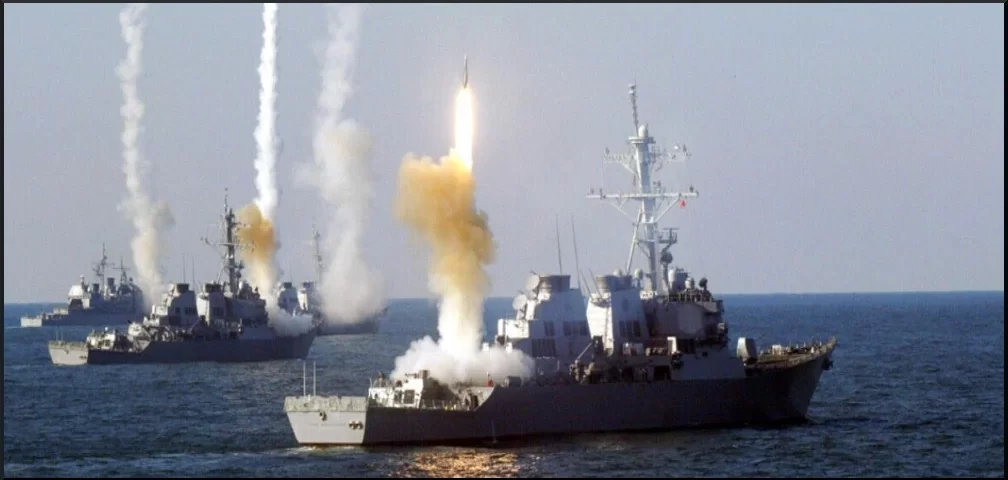by Bruce Gagnon, published on Organizing Notes, August 29, 2023
In an article in the mid-coast Maine publication called the Forecaster (August 18) it was reported that Bath Iron Works (BIW) had just reached agreement with the Machinists Union Local S6 on a new contract. The union represents 4,250 of the shipyard’s 6,500 workers.
The article concluded by reporting that BIW is currently building twelve Aegis destroyers at the Maine shipyard.
BIW is owned by the General Dynamics Corporation (GD) headquartered in Reston, Virginia.
Phebe N. Novakovic is the Chairman and Chief Executive Officer and made $21,478,167 in 2022.
 The Navy Aegis destroyers made at BIW (and Ingalls Shipbuilding in Mississippi) are key elements in the Pentagon’s first-strike attack program aimed at China and Russia.
The Navy Aegis destroyers made at BIW (and Ingalls Shipbuilding in Mississippi) are key elements in the Pentagon’s first-strike attack program aimed at China and Russia.
The Aegis ballistic ‘missile defense system’ is a program developed to provide ‘defense’ against short to intermediate-range ballistic missiles. The program is part of the U.S. national missile defense strategy and European NATO missile defence system.
Aegis BMD-equipped vessels can engage potential targets using the Standard Missile 3 mid-course interceptors and the Standard Missile 2 and Standard Missile 6 terminal-phase interceptors. Notable subcontractors and technical experts include Boeing Defense, Space & Security, Alliant Techsystems (ATK), Honeywell, Engility, Naval Surface Warfare Center, SPAWAR Systems Center, Johns Hopkins University Applied Physics Laboratory (JHU/APL), and the Massachusetts Institute of Technology Lincoln Laboratory (Lincoln Lab).
To make it easy to understand, the Navy Aegis interceptors are the ‘shield’ to pick-off Chinese and Russian retaliatory strikes after the U.S. launches a first-strike attack. The word “Aegis” is a reference that dates back to Greek mythology, with connotations of a protective shield, as the Aegis was the buckler (shield) of Zeus, worn by Athena.
The U.S. Space Force annually runs a computer war game where they practice this first-strike and the ensuing use of ‘missile defense’ to give the Pentagon a ‘successful’ decapitation attack.
In early 2008 an inactive school bus-size U.S. reconnaissance satellite was predicted to reenter the Earth’s atmosphere. Code named Operation Burnt Frost – a mission was created to knock the satellite out of the sky.
Three Aegis warships – the Lake Erie (CG 70), Russell (DDG 59) and Decatur (DDG 73) – were tasked to participate in the satellite shoot down, with Lake Erie designated as the principal firing ship. On Feb. 20, 2008, Lake Erie launched a single SM-3 missile, which intercepted the satellite at an altitude higher than 150 miles and a closing speed greater than 22,000 miles per hour.
This successful mission proved that the BMD interceptors on Aegis destroyers could also function as anti-satellite weapons (ASAT).
 Aegis destroyers also have other offensive capabilities. In the Space Force computer war games nuclear-capable Tomahawk cruise missiles are launched from the Aegis platforms during the US first-strike attack on China and Russia. Along with other Pentagon decapitation systems, this offensive Tomahawk ‘sword’ attempts to take out ‘enemy’ nuclear capabilities on land, at sea and in the air.
Aegis destroyers also have other offensive capabilities. In the Space Force computer war games nuclear-capable Tomahawk cruise missiles are launched from the Aegis platforms during the US first-strike attack on China and Russia. Along with other Pentagon decapitation systems, this offensive Tomahawk ‘sword’ attempts to take out ‘enemy’ nuclear capabilities on land, at sea and in the air.
The Aegis warships carry both the ‘sword and the shield’ and their job is to get as close to Chinese and Russian shores as possible in order to be most effective. Thus the Pentagon is building them at an astonishing rate – costing more than $2 billion each.
Because the Aegis launch system on the warships has had one of the better interception testing rates of all the various Pentagon ‘missile defense systems’, the Pentagon decided to also put the launch platforms on the ground and named them ‘Aegis Ashore‘. Today these Pentagon launch facilities are located at Radzikowo, Poland and Deveselu, Romania giving the U.S. decapitation platforms aimed at Russia in what should be called a ‘Cuban missile crisis in reverse’. The Tomahawk nuclear-capable missiles fired from these two locations could reach Moscow in a matter of minutes.
 Currently Navy Aegis destroyers are operating in the Mediterranean, Black, Baltic, Barents, and Bering Seas surrounding Russia.
Currently Navy Aegis destroyers are operating in the Mediterranean, Black, Baltic, Barents, and Bering Seas surrounding Russia.
These same offensive Pentagon naval warships also are deployed in the Sea of Japan, the Yellow Sea, East China Sea and South China Sea in the Pacific.
In addition to the Pentagon’s Navy Aegis program, U.S. allies in Japan, Spain, Norway, South Korea, Australia and soon Canada have similar Aegis warships. Put together they are a formidable first-strike attack weapon aimed at China and Russia.
How would Washington respond if China and Russia were surrounding the U.S. coastlines with similar warships with first-strike attack capabilities?
With the coming collapse of the U.S. imperial economy, how much longer can the taxpayers of this nation afford to pay for all these provocative war making programs?
Bruce Gagnon is a political organizer, blogger and writer who lives in Brunswick Main. His Website/Organization is Keep Space 4 Peace. The collapsing US military & economic empire is making Washington & NATO even more dangerous. US could not beat the Taliban but thinks it can take on China-Russia-Iran…a sign of psychopathology for sure. @BruceKGagnon
